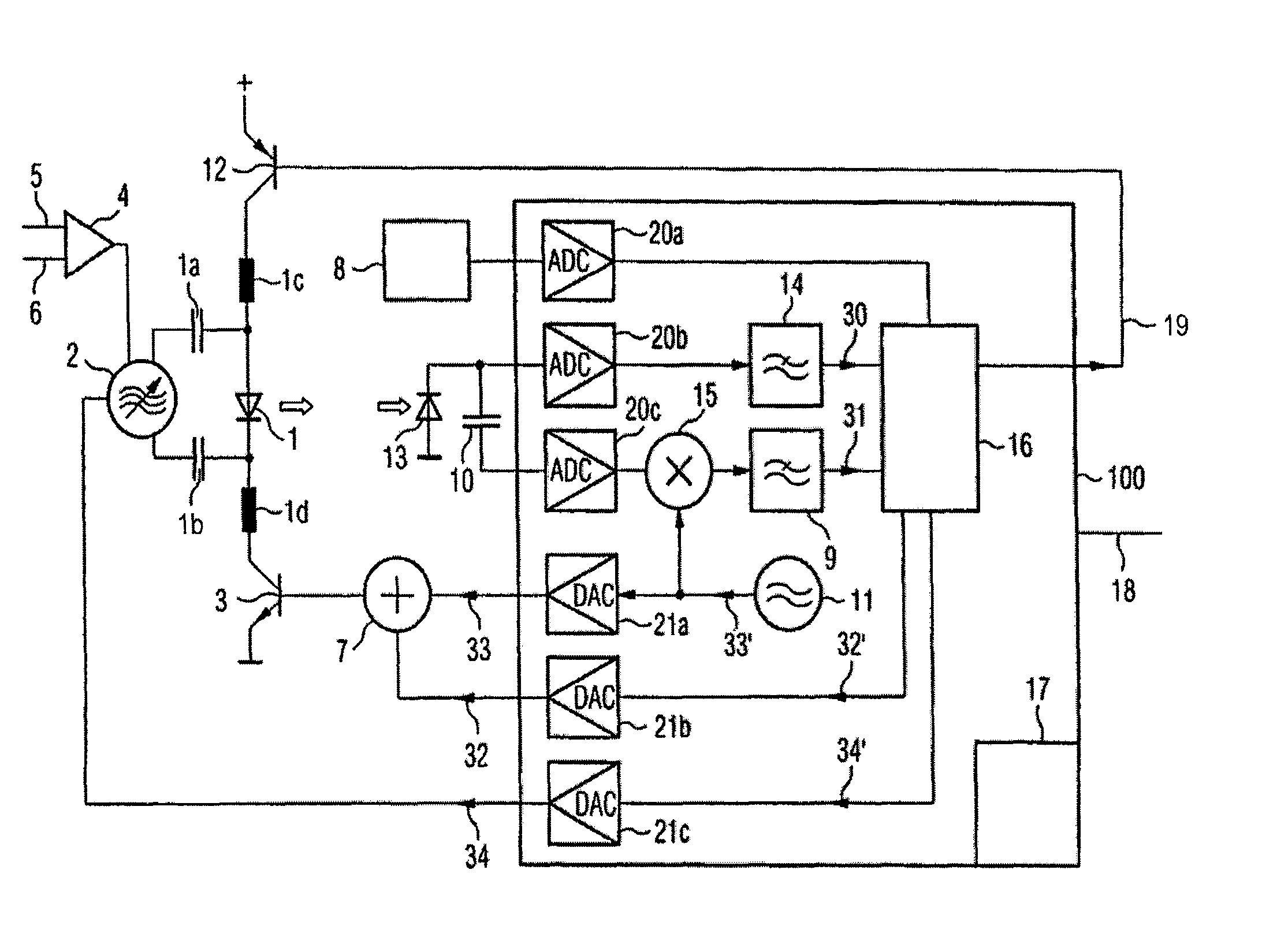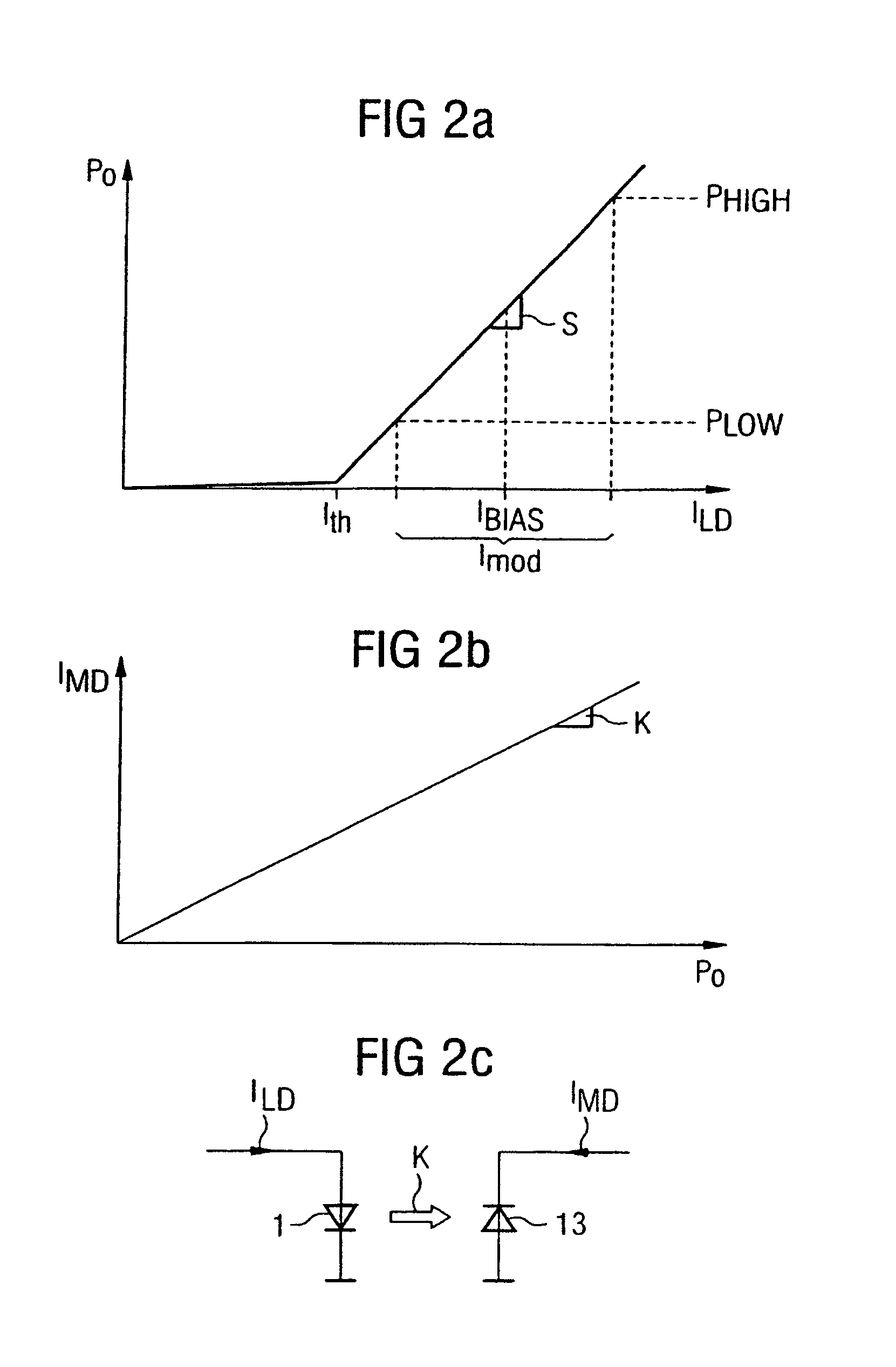Method and device for adjusting a laser
a laser and laser slope technology, applied in semiconductor lasers, distance measurement, instruments, etc., can solve the problems of low laser current, low laser slope, and high curren
- Summary
- Abstract
- Description
- Claims
- Application Information
AI Technical Summary
Benefits of technology
Problems solved by technology
Method used
Image
Examples
Embodiment Construction
[0033]In accordance with FIG. 1, a laser diode 1 is coupled to a monitor diode 13 via an optical connection. An optical signal emitted by the laser diode 1 is transmitted partly to the monitor diode 13 via the optical coupling and converted into an electrical monitor signal, for example a monitor current. Furthermore, the laser diode is thermally coupled to a temperature sensor 8, which converts the present temperature of the laser diode into an electronic signal.
[0034]The monitor diode 13 and the temperature sensor 8 are connected to a microcontroller 100, which evaluates the electrical signals. The microcontroller 100 additionally has analog and digital control outputs operatively connected to peripheral elements of the laser diode 1. The microcontroller 100 controls a PNP switching transistor 12 via the control line 19, so that the laser current of the laser diode 1 can be switched off by means of this safety circuit in the case of overheating.
[0035]The laser current that can be ...
PUM
 Login to View More
Login to View More Abstract
Description
Claims
Application Information
 Login to View More
Login to View More - R&D
- Intellectual Property
- Life Sciences
- Materials
- Tech Scout
- Unparalleled Data Quality
- Higher Quality Content
- 60% Fewer Hallucinations
Browse by: Latest US Patents, China's latest patents, Technical Efficacy Thesaurus, Application Domain, Technology Topic, Popular Technical Reports.
© 2025 PatSnap. All rights reserved.Legal|Privacy policy|Modern Slavery Act Transparency Statement|Sitemap|About US| Contact US: help@patsnap.com



